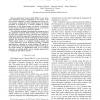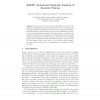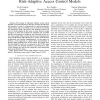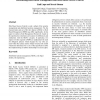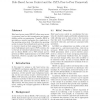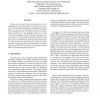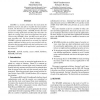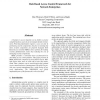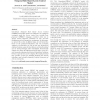CSFW
2012
IEEE
12 years 4 months ago
2012
IEEE
—Role-based Access Control (RBAC) is one of the most widespread security mechanisms in use today. Given the growing complexity of policy languages and access control systems, ver...
CADE
2011
Springer
13 years 1 months ago
2011
Springer
We describe asasp, a symbolic reachability procedure for the analysis of administrative access control policies. The tool represents access policies and their administrative action...
ARESEC
2011
13 years 1 months ago
2011
—The concept of risk-based adaptive access control (RAdAC, pronounced Raid-ack) has been recently introduced in the literature. It seeks to automatically (or semi-automatically) ...
RBAC
1997
14 years 3 months ago
1997
Role Based Access Control is only a subset of the security management and distributed systems management. Yet, the characteristics and use of the role objects in RBAC or Role Base...
CSREASAM
2006
14 years 3 months ago
2006
Role based access control (RBAC) allows users access to resources based on their competencies and responsibilities within an organization. Typically, RBAC is provided as a securit...
APNOMS
2006
Springer
14 years 5 months ago
2006
Springer
For an efficient role based access control using attribute certificate in highly distributed computing environments, we use a technique of structuring role specification certificat...
WETICE
1997
IEEE
14 years 6 months ago
1997
IEEE
In this paper we want to share our experiences with implementing a scheme that enforces role based access control in a distributed, heterogeneous computing environment. This work ...
WETICE
1998
IEEE
14 years 6 months ago
1998
IEEE
SESAME is a security architecture that starts from the Kerberos protocol and adds to it public-key based authentication, role based access control, delegation of rights and an ext...
ACSAC
1998
IEEE
14 years 6 months ago
1998
IEEE
A business's success depends on its ability to protect valuable business assets in an increasingly hostile environment. Protecting information requires a cost, not only in pu...
COMPSAC
2002
IEEE
14 years 6 months ago
2002
IEEE
Generalized Temporal Role Based Access Control (GTRBAC) model that captures an exhaustive set of temporal constraint needs for access control has recently been proposed. GTRBAC’...
